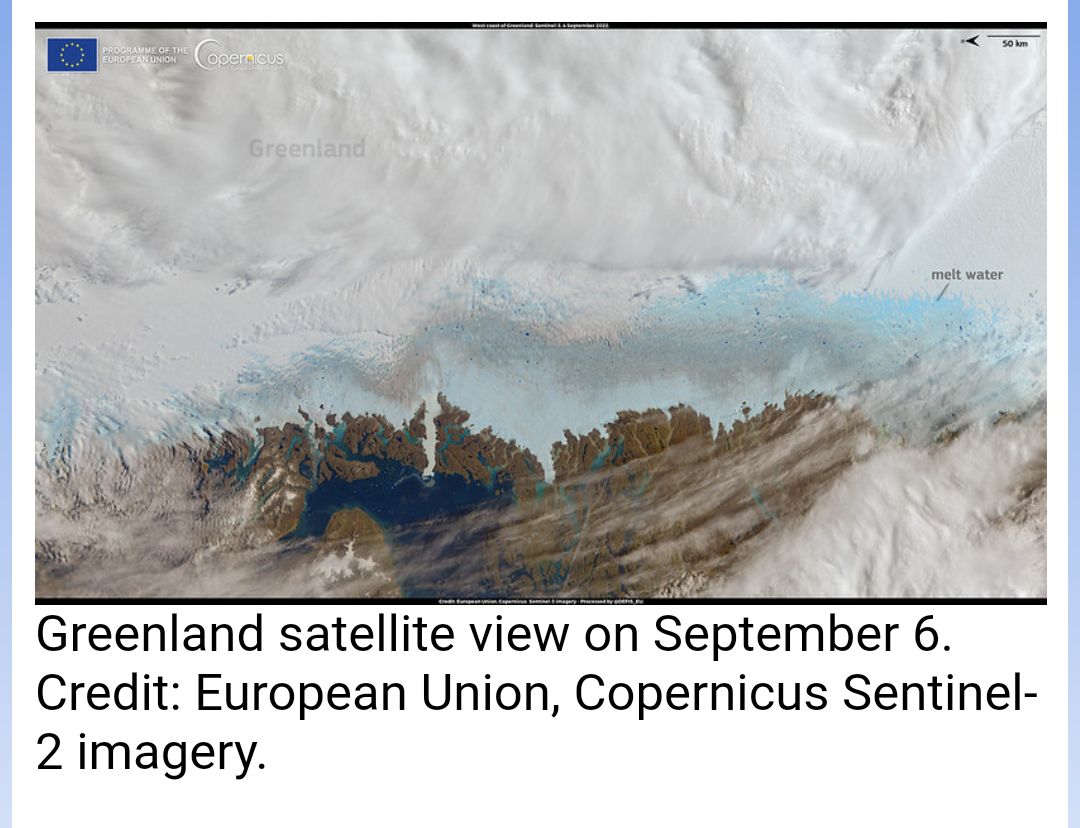**** Info via Environment Canada
Zombie ice to rise sea level
An unusual late-summer heat wave affected Greenland in early September. In some areas of western Greenland, the air temperature anomaly (difference from normal) was 15°C higher than the reference value, resulting in a significant melting of the ice sheet.
Greenland satellite view on September 6. Credit: European Union, Copernicus Sentinel-2 imagery.
According to a recent study published in the journal Nature Climate Change, zombie ice from Greenland is expected to raise sea levels by more than 27 centimetres. Zombie ice is ice that is still attached to bigger areas of ice, but is no longer being replenished by glaciers, as they are getting less snow. Without replenishment, the ice is doomed to melt, inevitably raising sea levels, according to study co-author William Colgan, a glaciologist at the Geological Survey of Denmark and Greenland.
“It’s dead ice. It’s just going to melt and disappear from the ice sheet,” Colgan said in an interview. “This ice has been consigned to the ocean, regardless of what climate [emissions] scenario we take now.”
This 27-centimetre increase is more than twice as much as previously forecast by the Intergovernmental Panel on Climate Change who projected a range of six to 13 centimetres for sea level rise from Greenland ice melt by the year 2100. The melting ice in Greenland has a direct impact on sea levels rise everywhere on the planet. According to NASA, if all of Greenland’s glaciers melt, global sea levels will rise by over 7.4 meters.
NASA’s Oceans Melting Greenland airborne mission found that Greenland’s glaciers that empty into the ocean, like Apusiaajik Glacier shown here, are at greater risk of rapid ice loss than previously understood. Credit: NASA/JPL-Caltech.
Global sea level rise is one of the major environmental challenges of the 21st century. As oceans rise, water encroaches on land, affecting populations that live along shorelines. It also threatened freshwater supplies by encroaching saltwater from rising seas.
And Canada is not spared. Mass loss from glaciers and ice caps in the Canadian Arctic represent the third largest cryosphere contributor to global sea level rise, after the Greenland and Antarctic ice sheets.
Learn more about changes in oceans surrounding Canada.




